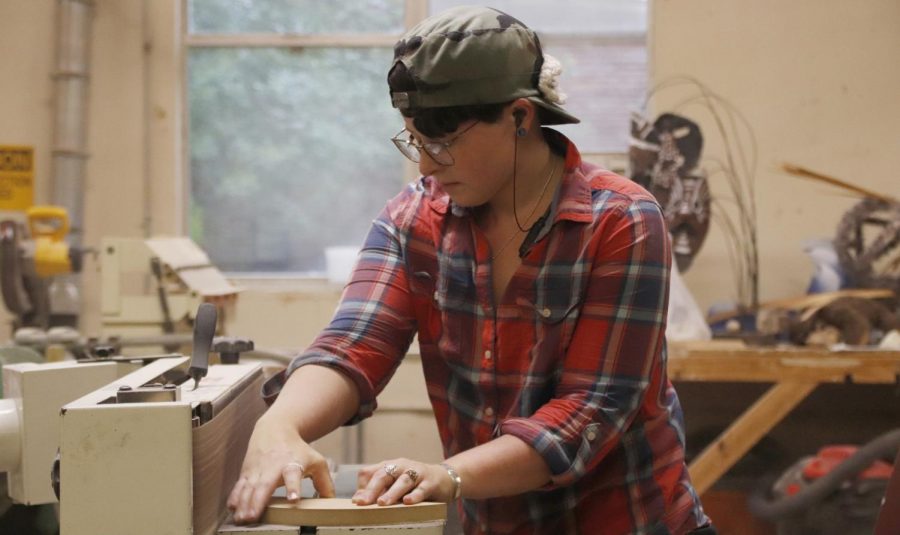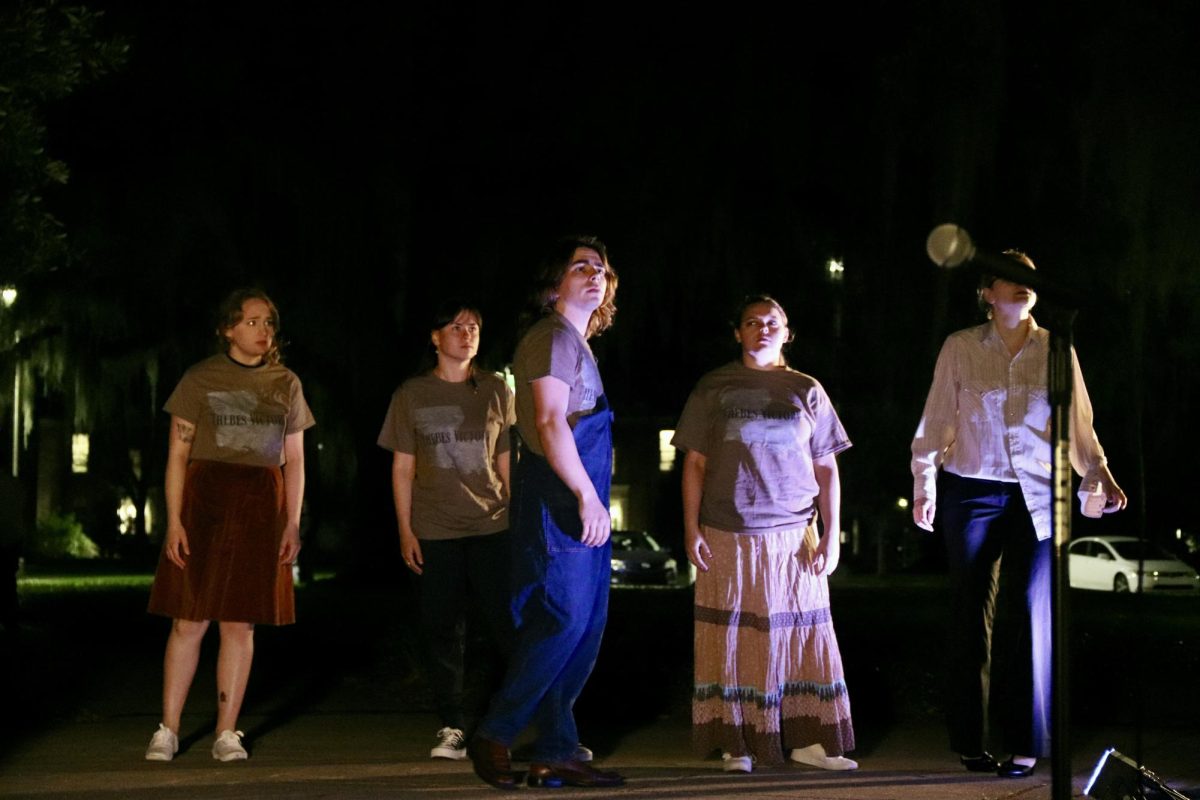Beyond creativity and passion, working artists may find finances factor into management of their career.
From a business standpoint, working artists consider several factors depending on their type of work.
“Artists who work with public art may have costs associated with permitting, engineering fees or logistical costs like crane operation or specialized trucking,” explained Jeff Mickey, professor of sculpture. “Artists working in a practice that focuses on performance may need to secure venues, rent or purchase special camera or recording equipment or hire experts, who may also be artists, in the fields of lighting, scenic design or prop fabrication to name a few.”
On a basic level, Mickey categorized those costs into materials, labor, overhead and profit. Materials must be selected and obtained to create the artwork, and for labor, the artist must spend their own time as well as compensate anyone who is hired.
“Overhead covers every other cost associated with the creation of the artwork not listed above,” shared Mickey. “This may include studio upkeep or rental, marketing or advertising, the light bill, equipment maintenance and the accountant one may hire to assist in navigating the tax code along with many others.”
Making artwork such as ceramics can become expensive.
“You need to buy clay, glazes, a wheel, a kiln, a studio space, gas or electricity to fire the kiln, tools, a clay mixer and other various expenses,” stated Olivia Goll, president of the Southeastern Ceramics Club.
To manage the costs of creating artwork, some artists may become associated with a gallery.
“A gallery sells the artist’s work in exchange for a percentage of the sale price,” shared Mickey. “The gallery’s cut may be as high as 60% or more. In exchange for this seemingly high percentage, the gallery might provide some of the things listed above such as marketing, advertising, shipping, storage of work or connections to buyers in other regions. Using the gallery as a middleman frees the artist to be more productive and have more time in their studio, which allows the artist to create more artwork.”
For students in a ceramics class, these materials are provided for free.
“As a new artist outside of school, though, the best way to offset the cost at first is to find another artist trying to go into business and buy materials together such as a shared studio space,” explained Goll.
Outside of the classroom, Goll provided advice on how an artist could manage the expenses.
“A working artist could minimize these costs by mixing their own clay or glazes instead of buying them premixed,” said Goll. “Another way for a ceramic artist to lower their cost is to use clay that fires to a lower temperature. If the kiln does not have to get as hot, then it will cost less in gas or electricity.”
Through the ceramics club, students can learn how to offset the costs while in class.
“We are lucky because then we get to sell the work we make,” expressed Goll. “Oftentimes, people find art a risky profession to get into, but through the ceramics club, we teach students how to make and sell work to make a profit and a living.”
Mickey advised students to follow their passion and take a basic business class. He attributed challenges working artists may face when starting out to a lack of education in business.
“An artist new in the field often has a hard time covering the costs of making enough art to have a cohesive body of work that they can use to develop a portfolio,” shared Mickey. “This portfolio is used to gain association to a gallery or to secure funding from grants and endowments. Like any business, starting capitol is necessary. The more starting capitol, the better the chance of success if it is used wisely.”







